Volvo’s commitment to safety extends beyond passive features like airbags and crumple zones. The Dynamic Stability and Traction Control (DSTC) system represents one of the brand’s most significant active safety technologies.
If you’ve ever wondered what those DSTC indicators on your dashboard mean or how this system keeps you safer on the road, this comprehensive guide will explain everything you need to know about this essential Volvo safety feature.
Understanding DSTC: Definition and Purpose
DSTC stands for Dynamic Stability and Traction Control, an advanced electronic stability system designed to help maintain vehicle control during challenging driving conditions. Unlike simpler traction control systems found in many vehicles, DSTC on a Volvo combines multiple sophisticated functions that work together to prevent accidents and improve handling.
The primary purpose of DSTC is to detect and correct skids before they become dangerous. The system continuously monitors your Volvo’s movement and compares it to your steering input. When it detects a discrepancy—indicating the car isn’t going where you’re steering it—DSTC intervenes automatically to help bring the vehicle back to your intended path.
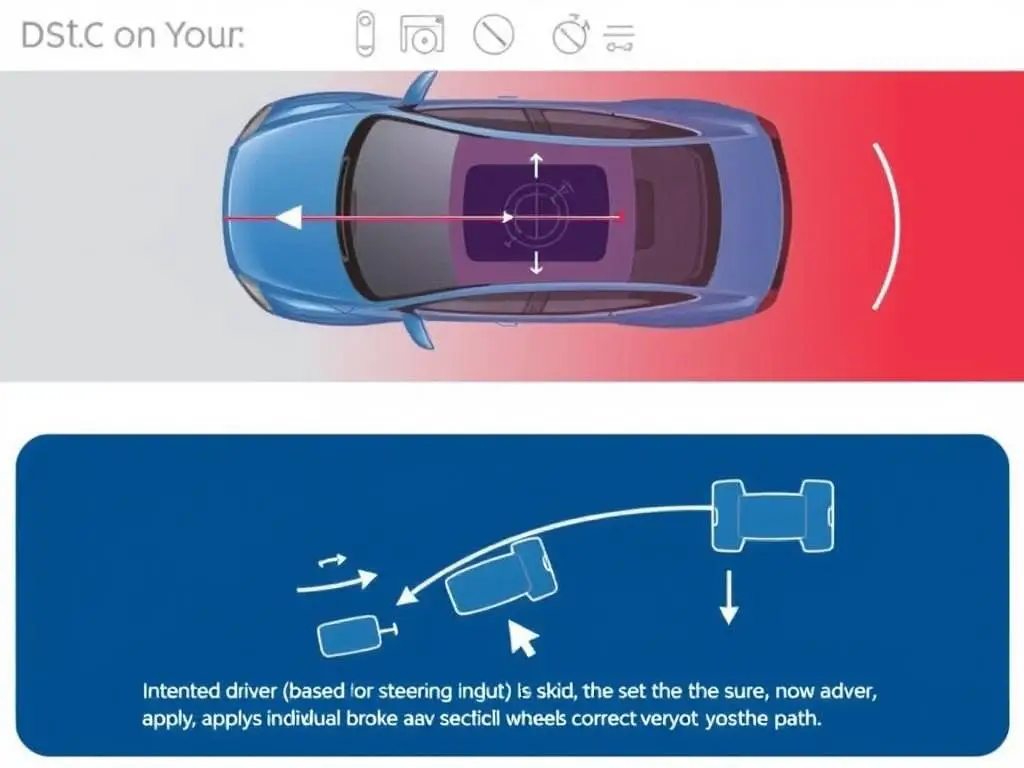
Is DSTC standard on all Volvo models?
Yes, DSTC has been standard equipment on all Volvo models since the mid-2000s. Earlier models may have had STC (Stability and Traction Control), which was a less advanced predecessor to the current DSTC system.
How DSTC Works on a Volvo
Volvo’s DSTC system integrates several components that work together to maintain vehicle stability. Understanding these components helps appreciate the sophistication of this safety technology.
Key Components of the DSTC System
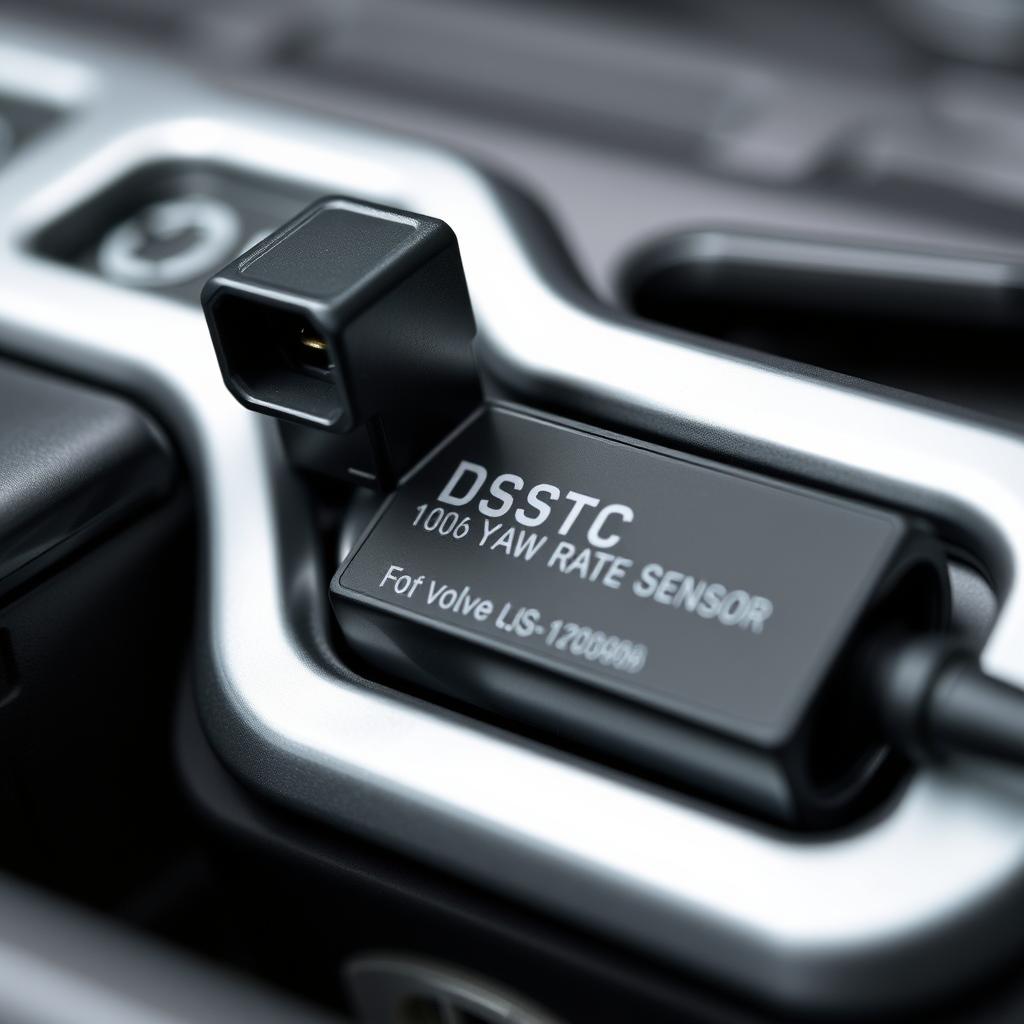
- Yaw Sensors: Measure the car’s rotation around its vertical axis, detecting when the vehicle begins to spin
- Steering Angle Sensors: Monitor the driver’s steering input to determine intended direction
- Wheel-Speed Sensors: Track the rotation speed of each wheel independently
- Accelerometers: Measure lateral (side-to-side) acceleration forces
- Electronic Control Unit (ECU): The “brain” that processes all sensor data and determines when intervention is needed
The Three Main Functions of DSTC
Volvo’s DSTC system consists of three primary functions that work together to maintain vehicle stability and traction:
Traction Control (TC)
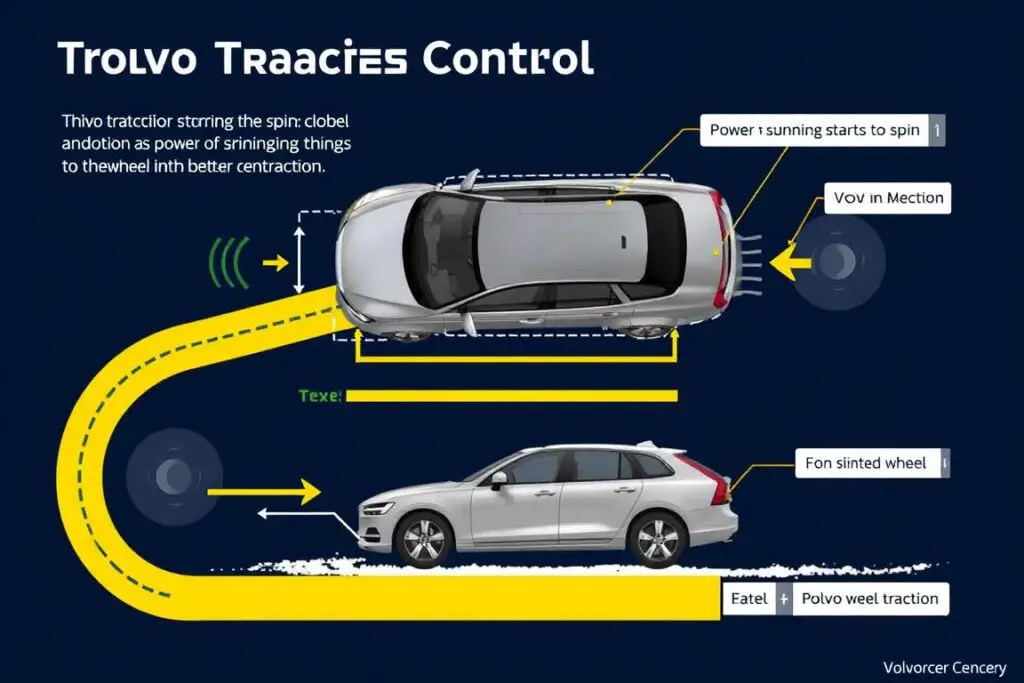
This function prevents wheel spin by transferring power from a drive wheel that begins to lose traction to the wheel on the opposite side of the vehicle. TC is most active at low speeds and is a permanent function that cannot be switched off.
Spin Control (SC)
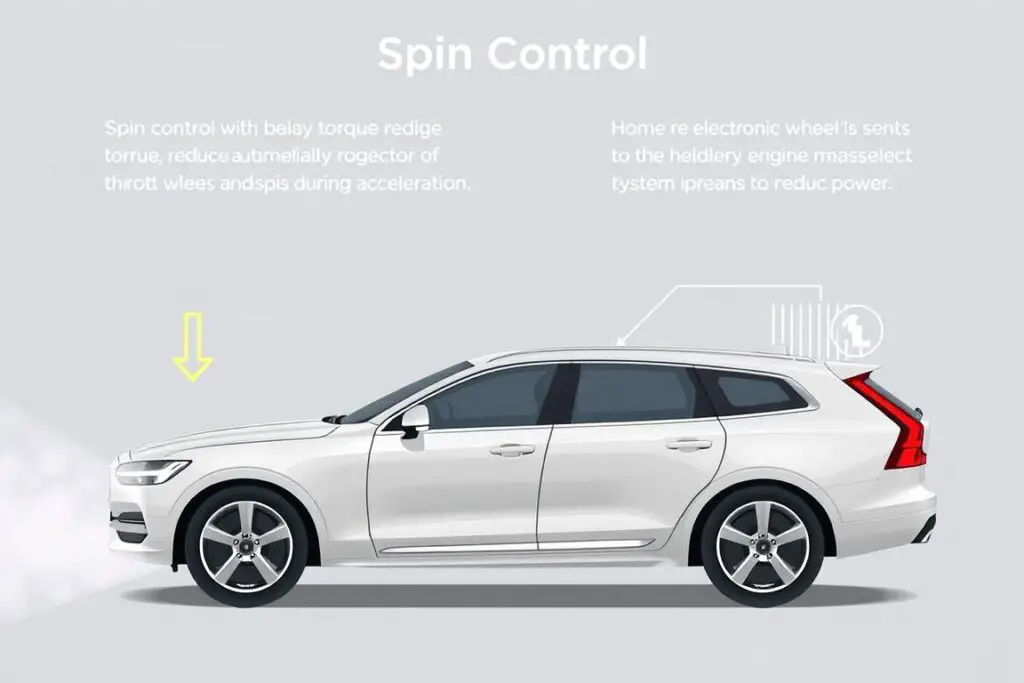
Spin Control prevents drive wheels from spinning during acceleration by reducing engine torque. This function can be temporarily switched off in certain situations, such as when driving with snow chains or in deep snow for maximum tractive force.
Active Yaw Control (AYC)
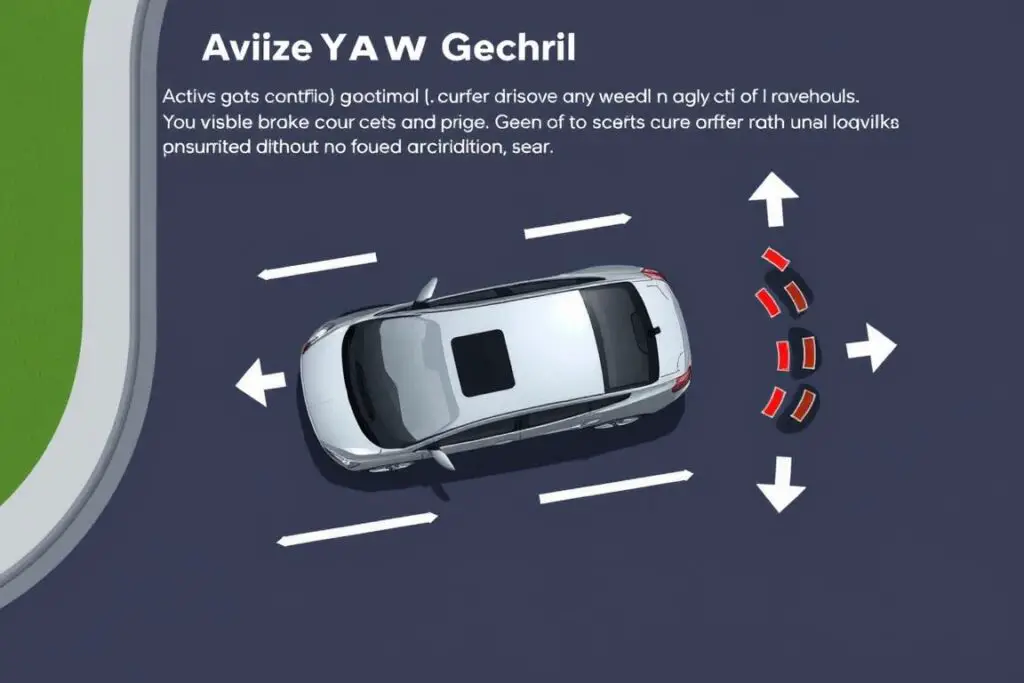
This function helps maintain directional stability when cornering by selectively braking one or more wheels if the vehicle shows a tendency to skid or slide laterally. Like Traction Control, AYC is a permanent function that cannot be disabled.
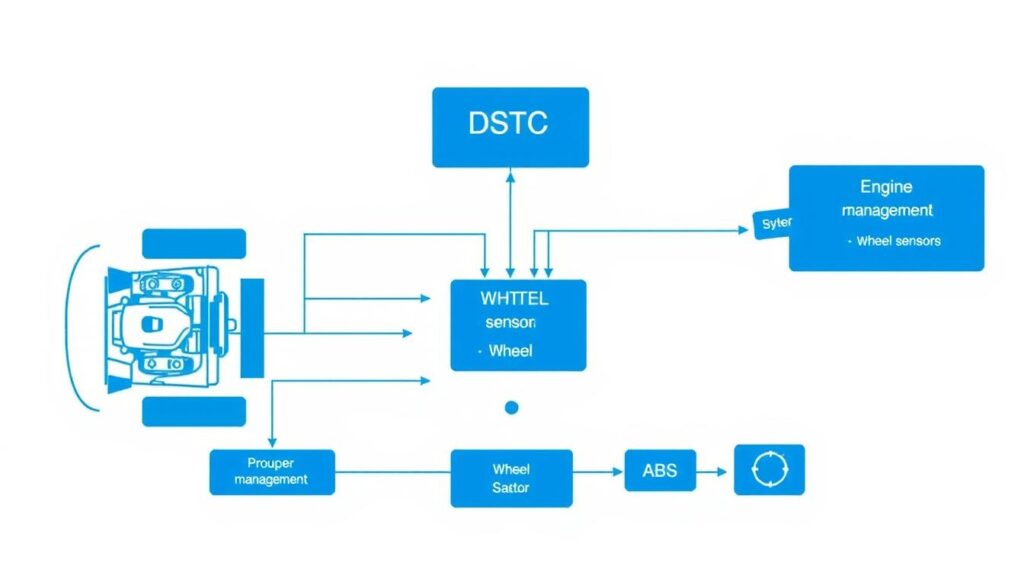
Benefits of DSTC on Your Volvo
The DSTC system provides numerous safety and performance advantages that make it one of Volvo’s most valuable safety innovations. Understanding these benefits helps appreciate why this system is so important for safe driving.
Enhanced Safety
DSTC significantly reduces the risk of accidents caused by loss of vehicle control. Research has shown that electronic stability control systems like DSTC can reduce single-vehicle crashes by up to 40% and fatal crashes by up to 56%. For Volvo drivers, this translates to:
- Reduced risk of rollover accidents
- Better control during emergency maneuvers
- Enhanced stability on slippery roads
- Improved safety when towing trailers

Improved Traction in Challenging Conditions

The traction control component of DSTC helps your Volvo maintain grip in situations where conventional vehicles might struggle:
- Starting on icy or wet inclines
- Accelerating on uneven surfaces
- Maintaining traction during rain or light snow
- Providing consistent power delivery on gravel or dirt roads
Pro Tip: In deep snow conditions, some Volvo owners temporarily disable the Spin Control function by using the DSTC menu on the steering wheel controls. This allows more wheel spin which can sometimes help maintain momentum in very deep snow. Remember to re-enable it once back on cleared roads.
Accident Prevention
DSTC is designed to intervene before an accident occurs. The system can detect the early signs of a skid or loss of control and make corrections faster than even the most skilled driver could react. This proactive approach to safety helps prevent accidents in situations such as:
- Sudden evasive maneuvers to avoid obstacles
- Cornering too quickly on wet or icy roads
- Encountering unexpected slippery patches
- Oversteering or understeering during emergency situations
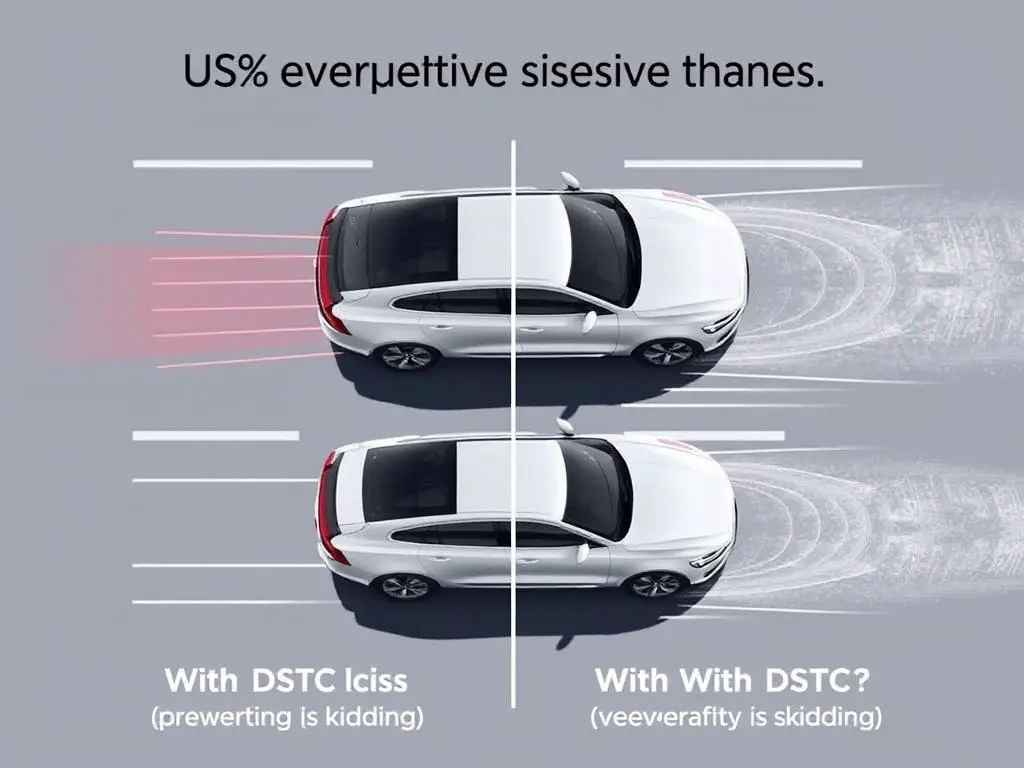
DSTC Compared to Other Stability Systems
While most modern vehicles feature some form of stability control, Volvo’s DSTC system has some distinctive characteristics worth understanding. Here’s how it compares to similar systems from other manufacturers:
| System Name | Manufacturer | Key Features | Compared to Volvo DSTC |
| ESP (Electronic Stability Program) | Mercedes-Benz, Volkswagen Group | Yaw control, traction control, anti-lock braking integration | Similar core functionality but with different tuning philosophy |
| DSC (Dynamic Stability Control) | BMW | Performance-oriented with selectable modes | More focus on driving dynamics versus Volvo’s safety emphasis |
| VSC (Vehicle Stability Control) | Toyota | Conservative intervention threshold | Generally intervenes earlier than DSTC |
| ESC (Electronic Stability Control) | General Motors | Integrated with traction control and ABS | Similar functionality but less sophisticated sensors in some models |
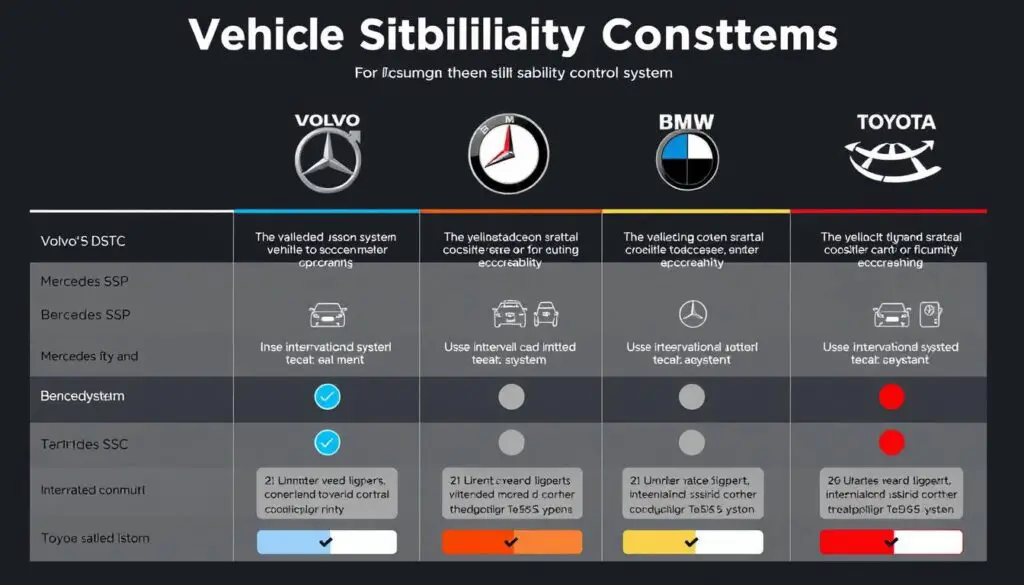
While all modern stability control systems share similar principles, Volvo’s DSTC is distinguished by its integration with other Volvo safety systems and its carefully calibrated intervention thresholds that balance safety with driving dynamics.
Maintenance and Troubleshooting DSTC
Like any advanced vehicle system, DSTC requires proper maintenance to function optimally. Understanding common issues and warning signs can help ensure your Volvo’s stability system continues to protect you and your passengers.
Common DSTC Warning Messages
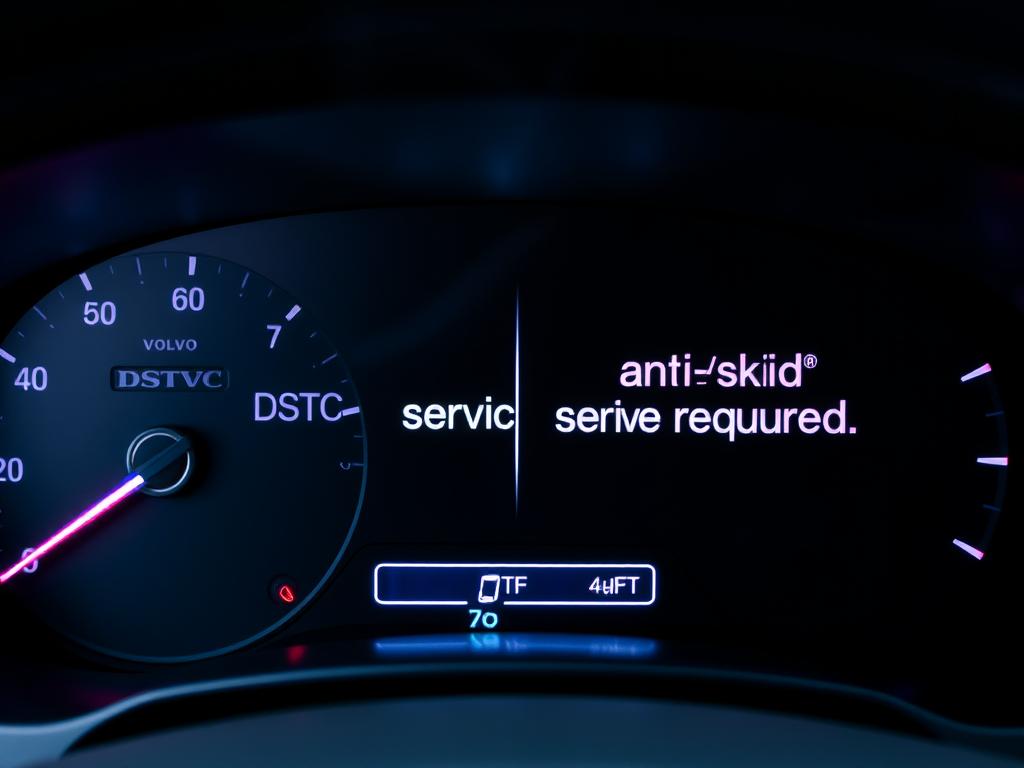
- “DSTC SPIN CONTROL OFF” – Indicates that the spin control function has been temporarily disabled by the driver
- “ANTI-SKID SERVICE REQUIRED” – Indicates a fault in the DSTC system that requires professional attention
- “TRACTION CONTROL TEMPORARILY OFF” – Usually appears when brakes have overheated; system will automatically reactivate when brakes cool down
- “DSTC TEMPORARILY OFF” – May indicate a sensor issue or temporary system limitation
Troubleshooting DSTC Issues
If you experience DSTC warnings or notice the system isn’t functioning properly, consider these common causes and solutions:
Potential Causes
- Low Battery Voltage: Often the first cause of DSTC warnings
- Wheel Speed Sensor Faults: Damaged or dirty sensors can cause erratic DSTC operation
- Steering Angle Sensor Calibration: May need recalibration after wheel alignment
- ABS System Issues: Since DSTC works through the ABS system, ABS faults can affect DSTC
- Electrical Connections: Corroded or loose connections to sensors
DIY Checks
- Check battery voltage (should be above 12.4V)
- Inspect wheel speed sensors for damage or debris
- Look for damaged wiring near wheel wells
- Check for ABS warning lights
- Ensure tires are properly inflated and in good condition
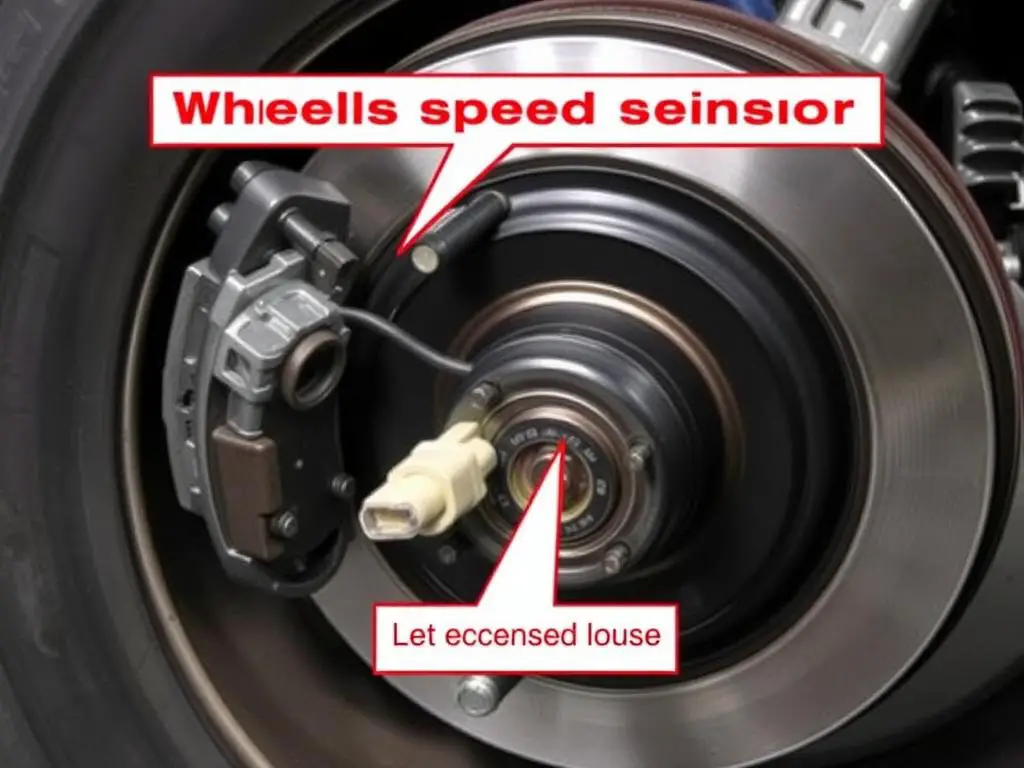
Important: If your Volvo displays the message “ANTI-SKID SERVICE REQUIRED,” have your vehicle inspected by a qualified Volvo technician as soon as possible. Driving with a malfunctioning DSTC system reduces your vehicle’s safety capabilities.
Tips for Driving with DSTC
To get the most benefit from your Volvo’s DSTC system, keep these driving tips in mind:

- Normal Driving: Keep DSTC fully enabled for maximum safety
- Snow Chains: Consider temporarily disabling Spin Control when using snow chains
- Deep Snow: In very deep snow, temporarily disabling Spin Control may help maintain momentum
- Winter Mode: Contrary to some beliefs, the “W” transmission mode is not necessary when DSTC is functioning properly
- Pulsating Sounds: A pulsating sound when DSTC activates is normal and indicates the system is working

Conclusion: The Value of DSTC on Your Volvo
DSTC on a Volvo represents one of the brand’s most significant contributions to automotive safety technology. By combining sophisticated sensors, intelligent software, and precise mechanical interventions, this system helps prevent accidents before they occur and assists drivers in maintaining control during challenging situations.
Understanding how DSTC works and recognizing its warning signs can help you maximize the safety benefits of your Volvo. Regular maintenance and prompt attention to any DSTC warnings ensure this critical safety system continues to protect you and your passengers throughout your ownership experience.
Whether you’re navigating icy winter roads, encountering unexpected slippery conditions, or simply enjoying the confidence that comes with Volvo’s comprehensive safety systems, DSTC works silently in the background to help keep you safe on every journey.



